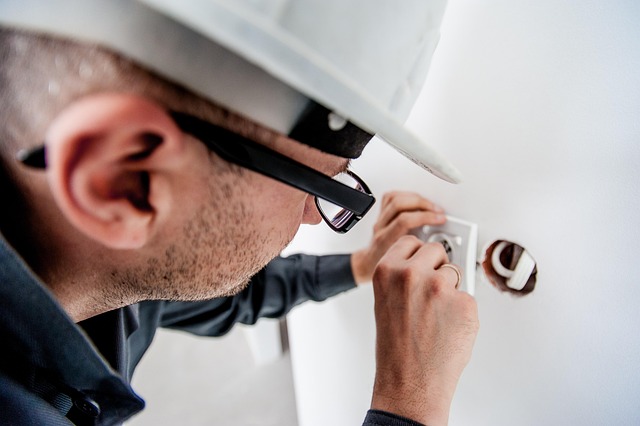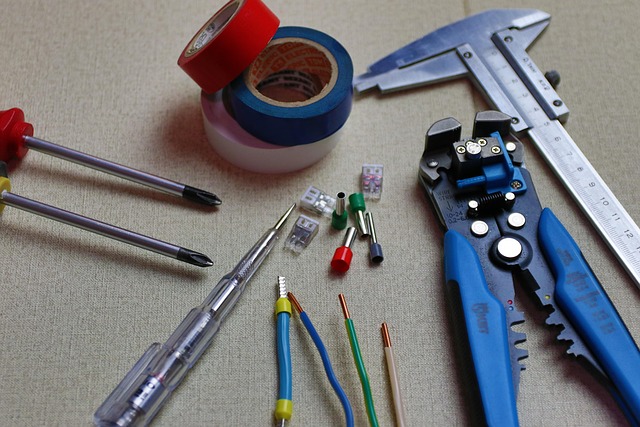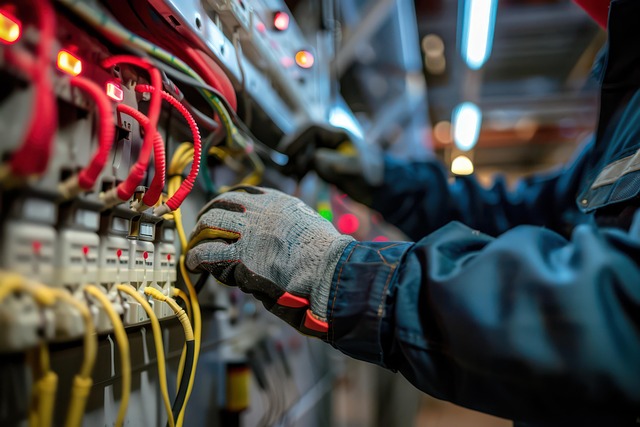Prompt identification of electrical issues is crucial for safe resolution. Electricians diagnose problems from faulty wiring to storm damage, use specialized tools to locate interruption points, and implement tailored solutions like cable replacement or line reinforcement. Prioritizing safety involves shutting off power at the main panel and turning off non-essential appliances. Early detection and professional extinguishment are vital for electrical fires due to their hidden nature. Electricians follow protocols including safety assessments, prompt emergency service contact, and on-call support until assistance arrives.
In the face of electrical emergencies, such as outages or fires, quick and knowledgeable response is crucial. This guide equips homeowners and professionals with essential knowledge to navigate these critical situations. We explore effective strategies for assessing outage causes, safely shutting off power supplies, identifying and extinguishing electrical fires, and contacting electricians during emergencies. With these steps, you’ll enhance safety and minimize damage, ensuring a swift return to normalcy. Trust this resource as your go-to guide for emergency preparedness with an electrician.
- Assessing Electrical Outage Causes
- Safely Shutting Off Power Supply
- Identifying and Extinguishing Electrical Fires
- Emergency Contacting Procedures for Electricians
Assessing Electrical Outage Causes

When an electrical outage occurs, understanding the potential causes is crucial for effective troubleshooting and safety measures. The first step in assessing an electrical outage is to identify whether it’s a local issue or a wider grid problem. Localized issues might include faulty wiring, overloaded circuits, or even tree branches touching power lines during storms. In such cases, an electrician can play a vital role in diagnosing and repairing the problem.
They employ specialized tools and knowledge to trace the fault, ensuring they locate the precise point of interruption. By quickly identifying the cause, electricians can implement solutions like replacing damaged cables, resetting circuit breakers, or reinforcing vulnerable lines to restore power efficiently and safely.
Safely Shutting Off Power Supply

In any emergency, one of the first steps is to ensure your safety by shutting off the power supply. This is a crucial task that an electrician can assist with, guiding you through the process to prevent further hazards. Start by locating your main electrical panel—a centralized control point for all circuits in your home or building. Here, you’ll find circuit breakers or fuse boxes. Flip the breaker to the ‘Off’ position or disconnect the fuses to interrupt the power flow.
Remember, during an emergency, it’s vital to act swiftly but calmly. Turn off non-essential appliances and lighting first to minimize damage. Once the power is cut, use a flashlight to assess the situation and avoid potential risks from remaining electrical sources. This step not only helps prevent fires but also protects you from electric shock. Always rely on professionals like electricians for guidance during such critical moments, ensuring your well-being and property safety.
Identifying and Extinguishing Electrical Fires

Identifying electrical fires is a critical skill for everyone, but particularly for homeowners and those who work with electricity. These fires often present unique challenges due to their hidden nature—electrical wires and components are often tucked away in walls, attics, or other hard-to-reach areas. Look for signs such as smoking outlets, flickering lights, a burning smell, or the sound of sizzling. If an electrical fire is suspected, immediate action is crucial.
Extinguishing these fires requires specific tools and knowledge, making it best left to professionals like electricians. They are trained to cut off power at the source, isolate the faulty circuit, and use appropriate extinguishing agents designed for electrical fires. Common methods include using dry chemical or carbon dioxide fire extinguishers, which are effective in smothering flames and cutting off oxygen supply without conducting electricity. Early detection and prompt action by both residents and qualified electricians can significantly minimize damage and ensure safety during electrical emergencies.
Emergency Contacting Procedures for Electricians

When an emergency arises, such as a power outage or an electrical fire, quick and effective response is crucial. Electricians play a vital role in these situations, requiring them to have well-established emergency contacting procedures. The first step is to assess the situation and ensure their own safety before attending to others. Once safe, they should contact their respective emergency services, providing accurate location details and describing the issue succinctly.
Effective communication involves using clear and concise language to relay critical information. For instance, reporting an electrical fire may include details like the type of fire (e.g., arcing or overheating), its location in the building, and any known causes. Following this initial contact, electricians must remain on-call until assistance arrives, ready to offer further insights if needed. These procedures ensure that professionals handle emergencies efficiently, minimising potential risks and damage.
In facing electrical emergencies, whether it’s an outage or a fire, knowing how to respond safely is paramount. This article has equipped you with valuable insights on assessing causes, shutting off power, identifying and extinguishing fires, and contacting electricians. Remember, in any crisis, your first step should always be to ensure your safety and that of others. For more complex issues, don’t hesitate to reach out to a licensed electrician for professional assistance.
